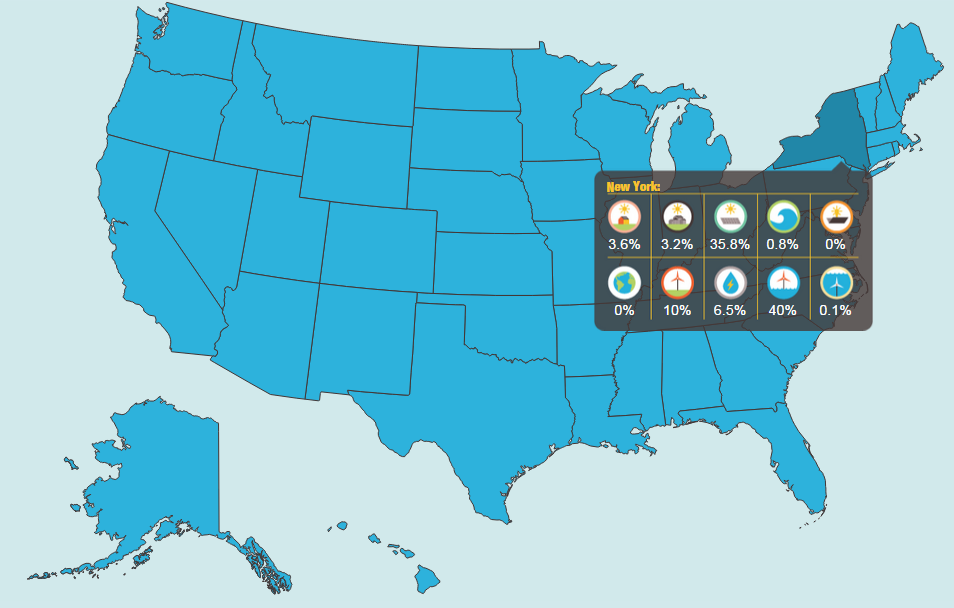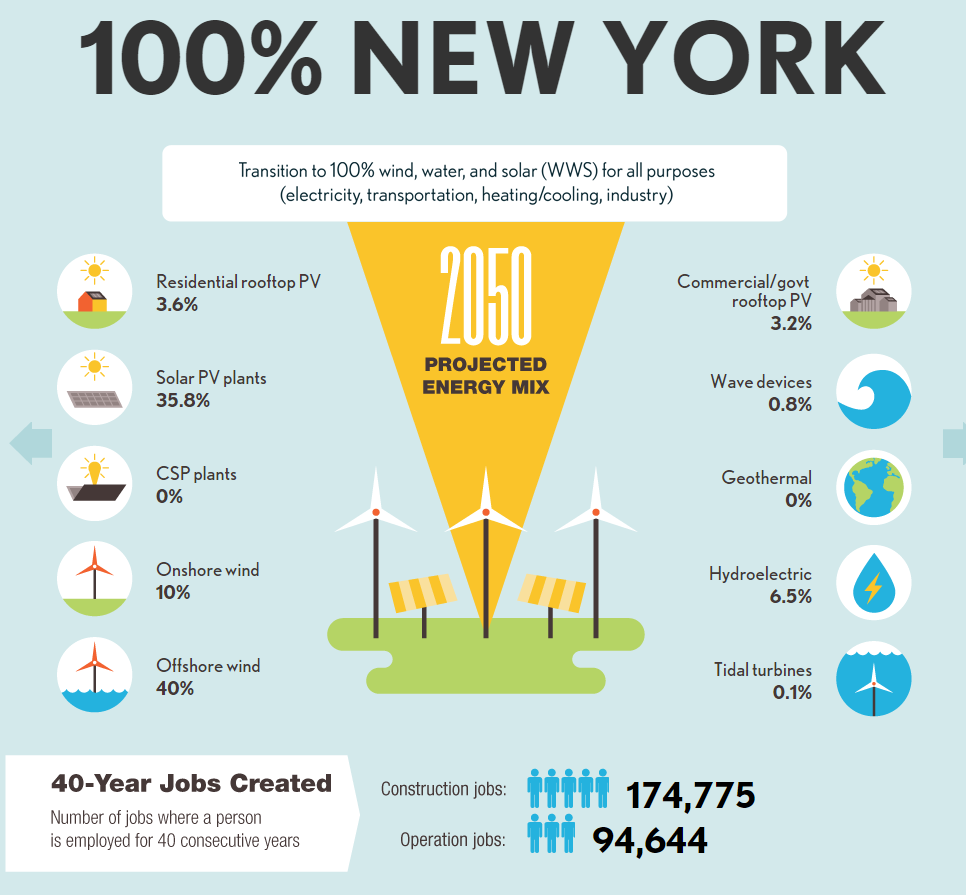
Good news: Within 35 years, the entire United States’ infrastructure may run entirely on renewable energy. Together with his flock of researchers, Stanford University’s Professor Mark Z. Jacobson has drafted an in-depth roadmap the integrates the existing wind, solar, and geothermal strengths of each state to achieve a combined 80% reliance on clean, renewable energy by 2030, and full reliance by 2050. The report features with an interactive map that displays each state’s current renewable energy resources and the expected growth per sector needed to achieve 100% sustainability.
The team carefully studied the state-by-state energy demands and how these figures will evolve over the next three decades. Next, the energy was categorized into residential, commercial, industrial and transportation needs, before calculating the new fuel demands if the current generation methods (coal, gas, oil, nuclear, and renewables) were replaced by electricity.

Once they determined how to power the new grid, each state’s sun exposure and the number of south-facing, non-shaded roofs capable of supporting solar panels were counted. Wind maps were studied to evaluate whether onshore or offshore wind turbines are an option, and finally, a Geothermal energy budget was set aside on a state-by-state-basis. The plan does not require any new hydroelectric dams either, instead opting to improve the efficiency of those currently available.
The main caveat in the study is that each state is required to set aside a maximum of 0.5% of its land surface to be filed with solar panels or wind turbines. Also — each state must leverage its most readily available renewable resource, meaning that states in the Great Plains are more likely to use windmills or solar panels while coastal states can rely on geothermal energy or offshore wind farms.
While at first glance such dramatic undertaking may seem extremely expensive, the heightened initial cost is expected to eventually pay for itself over the next 30 years, approximately equaling the cost of the current infrastructure.
“When you account for the health and climate costs – as well as the rising price of fossil fuels – wind, water and solar are half the cost of conventional systems,” said Jacobson. “A conversion of this scale would also create jobs, stabilize fuel prices, reduce pollution-related health problems and eliminate emissions from the United States. There is very little downside to a conversion, at least based on this science.”
The entire study is available in the journal Energy and Environmental Sciences . Its enactment should also see some direct health benefits, considering 63,000 people die in the US from air pollution-related illnesses.
Source Gizmag via Stanford.edu
Advertisement
Learn more about Electronic Products Magazine





